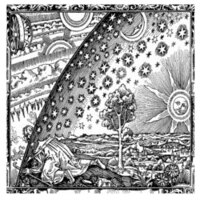Objectives and relevance of the project
The advancement of Science builds upon discoveries. A major driving force is technology transfer by which we mean the process of conveying knowledge and skills stemming from scientific and technological research in one discipline to another. A second one is to involve qualified and motivated junior academics. The purpose of this workshop is to bring together both, leading experts and junior researchers, from the two fields of Statistics and Cosmology in order to discuss recent developments in their fields and to generate new ideas. The focus will be on two areas of much current interest: statistical extreme value theory and the study of CMB radiation and related topics.
The Cosmic Microwave Background (CMB) represents the heat leftover from the Big Bang. By studying the fluctuations of the CMB, cosmologists can learn how the early Universe was formed and cross-check the basic parameters of the Big Bang theory. In 2013, the European Space Agency started releasing the raw data collected by the Planck space telescope, which give the yet highest precision picture of the CMB. However, the great potential of this huge database for answering several key questions of modern cosmology heavily relies upon the abilities of the data analysts to accurately model the CMB distributions. In particular, the construction of the CMB sky maps is based on a number of key-assumptions, among which that the initial conditions are drawn from a Gaussian random field with a nearly scale-invariant power spectrum. Detecting anomalies (that is, extreme observations) in the Planck map is of primary interest as these result from the violation of one or some of the assumptions made.
Statistical extreme value theory (EVT) is a branch of statistics which deals with extreme events. Max-stable processes arise as an extension of multivariate extreme value distribution methods, and are commonly used to model spatial dependencies. To the best of our knowledge, the literature on the use of EVT to model extremes in cosmology is rather poor and it boils down to the handful of contributions mentioned at the bottom. Modeling the maxima and minima of CMB measurements poses several statistical challenges. A key aspect is that the measurements themselves are the end product of a large number of data reduction and modeling steps which need to be tested for self-consistency. A second issue is how to model the dependence structure among the spatial observations. Last, but not least, when applied to the observed maxima/minima, the location, scale and shape parameters of the generalized extreme value distribution (GEV) appear to vary significantly between different realizations.
The main purpose of this workshop is to explore whether and how models for spatial extremes may offer a flexible alternative to pinpoint extreme areas in CMB maps. A further line of research which will be pursued is the construction of smoothed max-stable random fields to model the spatial dependence structure. Besides the CMB, another key source of information for Cosmology is the study of the Large Scale Structure (LSS) of the Universe, which includes, for example, the characterization of clustering properties of galaxies and other dark matter tracers, galaxy cluster and void abundance measurements, and gravitational lensing analysis. In this case, the relevant cosmological fields display large deviations from Gaussianity, due to the non-linear effect of gravitational evolution of cosmic structures. Interestingly, modeling extremes in these fields can also lead to powerful tools to shed light on Early Universe physics, since small deviations from Gaussianity in the initial conditions produce rare events in the LSS tracer density fields. This interesting line of research will also be addressed in this workshop.
References
- S. Chongchitnan and J. Silk (2021). Extreme-value statistics of the spin of primordial black holes. PRD 104, 083018.
- P. M. Merkel and B. M. Schäfer (2015). Extreme value statistics of cosmic microwave background lensing deflection angles. MNRAS 453, 401–407.
- I. Harrison and P. Coles (2012). Testing cosmology with extreme galaxy clusters. MNRAS 421, L19–L23. I. Harrison and P. Coles (2011). Exact extreme value statistics and the Halo mass function. MNRAS 418, L20–L24.
- O. Davis, J Devriendt, S. Colombu, J. Silk, C. Pichon (2011). Most massive haloes with Gumbel statistics. MNRAS 413, 2087–2092.
- S. Colombi, O. Davis, J. Devriendt, S. Prunet and J. Silk (2011). Extreme value statistics of smooth random Gaussian fields. MNRAS 414, 2436–2445.
- G. Mikelsons, J. Silk, J. Zuntz (2009). Cosmic microwave background anomalies viewed via Gumbel statistics. MNRAS 400, 898–902.
Scope
The workshop is meant to create an international and stimulating environment to bring together junior and senior researchers from the two fields of Statistics and Cosmology in order to facilitate technology transfer of the theory of statistics for extremes to experimental cosmologists, and to present data scientists with the novel challenges posed by astronomical sky surveys. The workshop programme includes state-of-the-art keynote lectures delivered by academics with a renowned expertise in cosmology and statistics from both, UNIL and UNIPD, and from collaborating institutions (such as EPFL). Junior participants will have the opportunity to present, discuss and improve their own research thanks to the inputs received by the senior researchers during the poster session. Collaboration and networking will be facilitated through formal and informal exchanges of ideas during the many social moments and by the relaxed and enriching environment of the workshop venue.
Potential for follow-up activities
The workshop aims at creating an interdisciplinary network of collaborations among junior and senior scientists working at UNIPD and UNIL. During the workshop, all activities will be mirrored on its web site. The concluding roundtable discussion is intended to lay the ground to new collaborations which may culminate in one or more contributions to major journals in statistics and/or cosmology.


